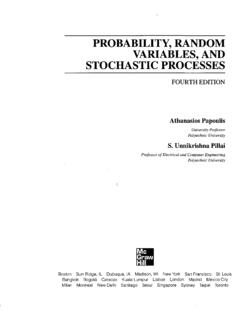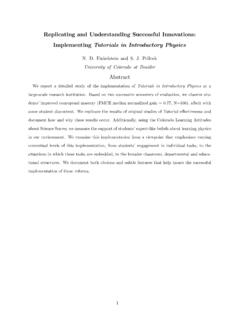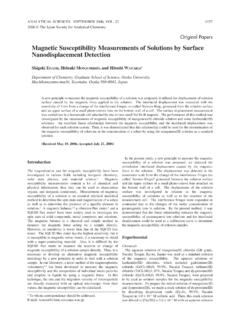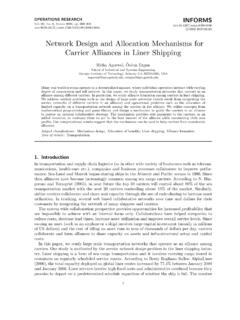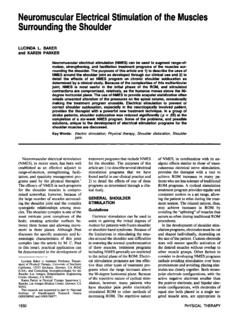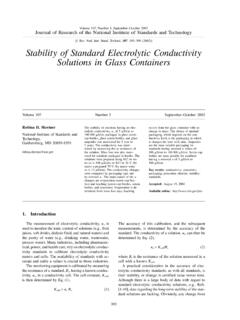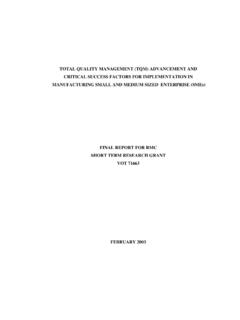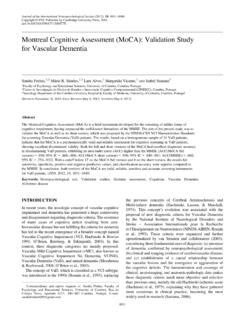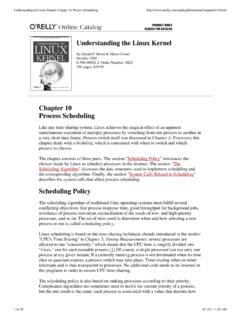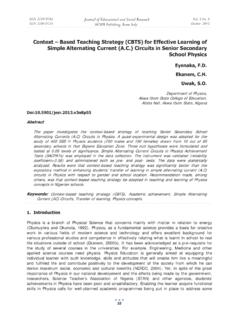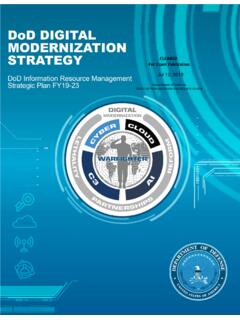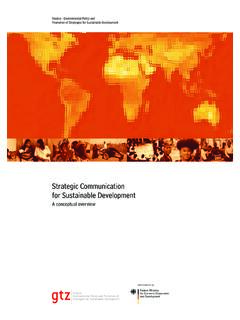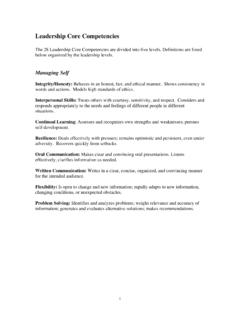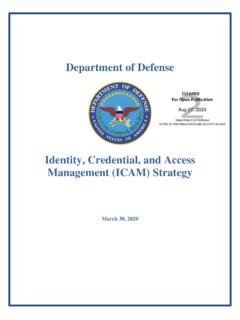Transcription of Types of Competitive Advantage and Analysis
1 International Journal of Business and Management Vol. 6, No. 5; May 2011 ISSN 1833-3850 E-ISSN 1833-8119 100 Types of Competitive Advantage and Analysis Wang, Wen-Cheng Department of Business Management, Hwa Hsia Institute of Technology 111 Gong Jhuan Rd., Chung Ho, Taipei, Taiwan, Tel: 886-2-8941-5022 E-mail: Lin, Chien-Hung Department of Business Management, Hwa Hsia Institute of Technology 111 Gong Jhuan Rd., Chung Ho, Taipei, Taiwan, Tel: 886-2-8941-5022 E-mail: Chu, Ying-Chien Department of Tourism and Leisure, National Penghu University 300 Liu-Ho Rd., Makung city, Penghu, Taiwan, Tel: 886-6-926-4115 E-mail: Received: October 27, 2010 Accepted: December 20, 2010 Abstract The internal sources of Competitive Advantage cover a wide range of areas.
2 The important Competitive advantages behind an organization are not merely determined by its external factors. The internal sources of Competitive Advantage of a firm have been considered as crucial factors to success. The research looks at the extensive literature in relation to Competitive Advantage . The formation of main theories in literature review was illustrated by the concepts of Competitive advantages through proper management action when managing the structure, process, culture and people of an organization. Therefore, the aim of Competitive Advantage recognition is connect with resources, capabilities and core competencies of the organization. By means of exploring and understanding the theories in literature review, to underpin the research.
3 Keywords: Competitive Advantage , Organization, Culture, Resources 1. Introduction A Competitive Advantage exists when the firm is able to deliver the same benefits as competitors but at a lower cost (cost Advantage ), or deliver benefits that exceed those of competing products (differentiation Advantage ). Competitive Advantage is a theory that seeks to address some of the criticisms of comparative Advantage . Competitive Advantage theory suggests that states and businesses should pursue policies that create high-quality goods to sell at high prices in the market. Porter (1995) emphasizes productivity growth as the focus of national strategies. Competitive Advantage rests on the notion that cheap labor is ubiquitous and natural resources are not necessary for a good economy. Competitive Advantage is necessary for satisfied customers who will receive higher value in delivered products for higher income what the owners request from management and such requirements can be fulfilled with organization of production, higher application and as low as possible production costs (Ranko, Berislav ,and Antun, 2008).
4 Barney (1991) suggested that the resources that are scarce and valuable at the same time can create Competitive Advantage , and if these resources are also difficult to duplicate, substitute and hard to deliver, they can sustain the Advantage . Competitive Advantage occurs when an organization acquires or develops an attribute or combination of attributes that allows it to outperform its competitors. These attributes can include access to natural resources, such as high grade ores or inexpensive power, or access to highly trained and skilled personnel human resources. Above writings signify Competitive Advantage as the ability to stay ahead of present or potential competition, thus superior performance reached through Competitive Advantage will ensure market leadership.
5 Also it International Journal of Business and Management Vol. 6, No. 5; May 2011 Published by Canadian Center of Science and Education 101provides the understanding that resources held by a firm and the business strategy will have a profound impact on generating Competitive Advantage . Differentiation strategy is usually developed around many characteristics such as product quality, technology and innovativeness, reliability, brand image, firm reputation, durability, and customer service, which must be difficult for rivals to imitate (Mose, 2010). A firm implementing a differentiation strategy is able to achieve a Competitive Advantage over its rivals because of its ability to create entry barriers to potential entrants by building customer and brand loyalty through quality offerings, advertising and marketing techniques.
6 Thus, a firm that implements a differentiation strategy enjoys the benefit of price-inelastic demand for its product or service. In addition, Barney (1991) emphasized the ability of firms to establish entry obstruction in order to prevent imitation from its competitors and take Advantage of their resource for the purpose of sustaining the international Competitive Advantage . In this paper is going to probe the internal factors of managerial action to gain Competitive Advantage . Discussion about the technology and innovation, human resources, organizational structure resources factors to see how they contribute to the Competitive Advantage and the relationships in between. 2. Sources of Competitive Advantage Technology and innovation for Competitive Advantage The term innovation has a commercial aspect different from scientific research.
7 Innovation has a very important role in economic development of countries, because innovative companies, through commercializing their research and development results, are creating new and nonexistent value. Furthermore these same companies are getting an important share of the newly created value. By this way, they are mainly creating wealth for themselves, for their country and for the world. Innovation includes both product / service and process innovations. Product innovations are products that are perceived to be new by either the producer or the customer; the latter includes both end-users and distributors. Process innovation refers to new processes which either reduce the cost of production or enable the production of new products (Harmsen, Grunert, and Declerck, 2000).
8 In spite of the increasing importance of innovation and the role played by technological capabilities in a firm s growth trajectory, little is known how technological innovation in different organizations is driven by their technology strategy, the plan that guides the accumulation and deployment of technological resources and capabilities (Dasgupta, Sahay, and Gupta, 2009). That is, the most innovative firms engage in a continual search for better products, services, and ways of doing things. They try to continuously upgrade their internal capabilities and other resources. Aggregate innovative capacity of a nation is derived from the collective innovative capacity of its firms. The more innovative firms a nation has, the stronger that nation s Competitive Advantage . Innovation also promotes productivity, the value of the output produced by a unit of labor or capital.
9 The more productive a company is, the more efficiently it uses its resources. The more productive the firms in a nation are, the more efficiently the nation uses its resources (Knight, 2007). Innovation and entrepreneurial activity are the engines of long-run economic growth. Often, entrepreneurs first commercialize innovative new products and processes, and entrepreneurial activity provides much of dynamism in an economy. For example, the economy of the United States has benefited greatly from a high level of entrepreneurial activity, which has resulted in rapid innovation in products and processes. Human resources for Competitive Advantage Human resources are a term used to describe the individuals who comprise the workforce of an organization, although it is also applied in labor economics to, for example, business sectors or even whole nations.
10 Firms can develop this Competitive Advantage only by creating value in a way that is difficult for competitors to imitate. Traditional sources of Competitive Advantage such as financial and natural resources, technology and economies of scale can be used to create value. However, the resource-based argument is that these sources are increasingly accessible and easy to imitate. Thus they are less significant for Competitive Advantage especially in comparison to a complex social structure such as an employment system. If that is so, human resource policies and practices may be an especially important source of sustained Competitive Advantage (Jackson and Schuler, 1995). Within the best practices approach to strategic HRM, the first practice, internal career opportunities, refers to the organizational preference for hiring primarily from within.
